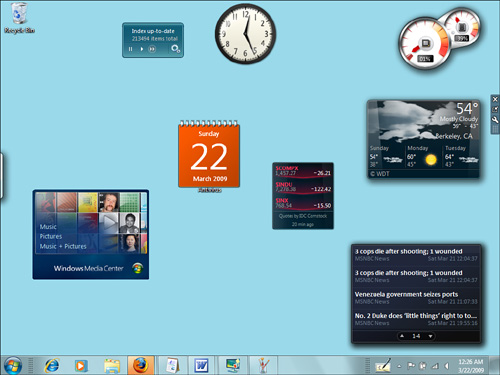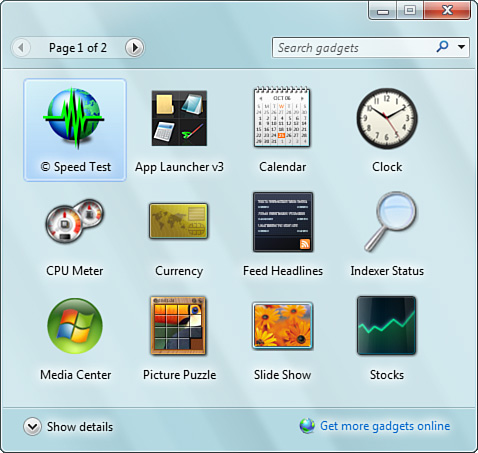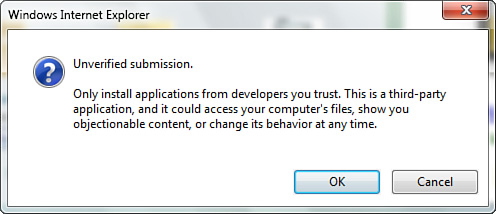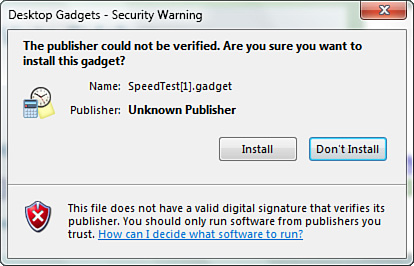Remember that? Enabling Active Desktop actually
set Internet Explorer to be the system shell. Rather than your desktop
essentially being a Windows Explorer folder, it was now much more, tying
closely into Internet Explorer. If IE crashed, the house of cards came
crashing down, including your interface with the operating system. The
problem had to do with Active Desktop being ravenous for system
resources. Add more than a couple Active Desktop elements, and the
system would starve for resources, disabling other applications you
might want to open or have open.
Again the question was raised: Can’t we do
something useful with all that otherwise barren computer landscape,
especially now that screens are wider than they used to be? Apparently
we have become enamored with
the idea of our laptop computers being even better than video games or
movie theaters in some ways. We can isolate ourselves now, with our own
personal laptop wide-screen movie theaters. Give me a stack of movies
and a pair of headphones, and I’m gone for days, despite my heated
complaints about the demise of the taller screens. I mean, what are
computer makers and Microsoft—and even Apple—thinking? Do engineers
think that most of us use computers to watch the latest Hollywood
blockbusters that we’ve illegally downloaded from BitTorrent? No, we’re
web browsing and writing documents in Office, such as PowerPoint
presentations, Word docs, or Excel spreadsheets. These applications beg
for taller not wider screens. If you’re a writer, good luck finding a
laptop with an old-fashioned 4:3 aspect ratio. Everything is now “wide,”
meaning also not as tall. Translate: more scrolling.
But enough of my rant. In any case, we now have a
generation of wide screen displays with gobs of extra unemployed pixels
to both sides during most of the workday. That being the case,
Microsoft was wise to exhume the concept of Active Desktop and give it
another go, in the form of gadgets and Windows Sidebar. Gadgets are
analogous to the Active Desktop add-ins or applets. If you’re familiar
with Mac OS X, perhaps you are thinking of Apple’s Dashboard and Widgets
right about now.
Windows Sidebar was the place on Vista’s screen (left or right side) where the gadgets typically lodged themselves. Windows Sidebar has gone away in Windows 7, which is no big loss, since
it used to mysteriously disappear from Vista for no good reason. Folks
often pulled gadgets onto the desktop as a workaround, and to make them
bigger or to show more text, as with a news feed. True, once they were
on the desktop, they could become easily obscured by other windows, but
the new Windows 7 desktop peek feature makes it so easy to check your gadgets and then flip right back to what you were doing that this doesn’t matter.
Note
Actually, sidebar.exe
is still the application that is responsible for running and displaying
gadgets on the desktop. There just is no longer a Windows Sidebar
proper. |
Although Windows Sidebar is gone, the Gadget Gallery that premiered with Vista remains and is now called Desktop Gadget Gallery. You reach the Desktop Gadget Gallery by clicking Start and typing gadget (which will find Desktop Gadget Gallery) or by right-clicking the desktop and choosing gadgets.
Note
For gadgets to show on
your desktop, you have to turn on Desktop Items from the desktop context
menu. Right-click the desktop and choose View/Desktop Items. Note that
this is a toggle, so you can also easily hide all your desktop items
(including shortcuts, folders, etc.) by using this command. |
Gadgets have proven to be more stable than their
predecessor Active Desktop. They should be, simply because they are
built using either DHTML or the Windows Presentation Foundation. Gadgets
in general perform well and do not appreciably slow down your computer
the way Active Desktop used to. There is a host of third-party gadgets,
many of them useful for businesspeople.
Which gadgets you put on your desktop depends on your needs, of course. Typically, you’ll add a clock and a calendar, a
CPU and RAM gauge (to see how maxed out your computer is, sort of like
having a tachometer in your car), and a notepad. If you work with
international money exchanging, or travel frequently, the always
up-to-date currency calculator is nice. The RSS feeds gadget connects to
Internet Explorer and downloads headlines from your subscribed RSS
feeds.
Tip
If you have multiple
monitors, you can set which one will display your gadgets. You can put
the gadgets on a second monitor and maximize your primary monitor for
use with your main applications. As you’ll see later, you can even fill
up the entire second monitor with gadgets by dragging them there. |
Figure 1
shows an example of a gadgets setup using some of the gadgets supplied
with Windows 7. I have added a few other gadgets that I downloaded from
various places on the Web. One is called Index Monitor, which lets you
easily observe and control Window’s indexing service.

Adding New Gadgets
Microsoft supplies a stock set of gadgets to
choose from. Choosing and organizing them is self-explanatory and
intuitive after you learn the basics:
1. | Right-click anywhere on the desktop and choose Gadgets. A dialog box with available gadgets appears, as shown in Figure 2.

|
2. | Click
Show Details to open the details for any gadget that you click.
Depending on the gadget, you might see a useful description. Leave the
panel open, and any gadget you click will have its details shown there.
|
3. | Double-click a gadget to add it to your desktop. Alternatively, you can drag it to the desktop and release it where you want it.
|
If
you find that you cannot see the gadgets even though they are turned
on, first hover your mouse pointer over the Show Desktop button to
display all desktop items, including gadgets. Still not working? Display
the desktop, right-click it, and choose View, Show Desktop Items. But if you want a particular gadget to always be in front of other windows, right-click the gadget and choose Always on Top. |
|
Downloading New Gadgets
Notice
that, as with all Explorer windows, there is an as-you-type search box
in the upper-right corner to help you find the gadget you are looking
for. If you can’t find the tool for the job, try searching the Internet:
1. | At
the bottom of the Add New Gadgets dialog box, click Get More Gadgets
Online. This will open a browser window in which you can download new
gadgets.
|
2. | To
add a gadget from the web page, follow the instructions. The web page
changes frequently, so we will not describe it here. Many gadgets have
reviews so that you can read before trying.
|
3. | After
you decide you want to install or try a particular gadget, click
Download. If it’s a third-party program (which is likely), you’ll see
the dialog box shown in Figure 3.

|
4. | So,
should you install a foreign gadget? Consider the source. Microsoft no
doubt does not post downloadable gadgets that have not been tested and
approved. I would not hesitate to install any gadgets found on the
Microsoft web pages. Click OK to download the gadget.
|
5. | When downloaded, click Open. You will see a dialog box asking for confirmation, as you see in Figure 4.

|
6. | Click Install and the gadget is installed and added to your desktop automatically.
|
Tip
There are three types of
gadgets in the current gadget universe: Windows Desktop gadgets, Windows
Live gadgets, and Windows Sideshow gadgets. The Windows Live website
offers gadgets that you can install on your Windows Live home page.
Those gadgets won’t install into Windows 7—they are a different animal.
Those are Windows Live gadgets as opposed to Desktop gadgets, and they
install into a customized web page and thus only appear in a browser
window. Just to confuse matters more, there are also SideShow gadgets.
These gadgets are for displaying information on stuff like keyboards,
laptop cases, remote controls, cell phones, and the like, without having
to open the device. |
One gadget I find useful
is called Uptime. This gadget allows you to see how much time has
passed since you last restarted your computer. Even though Windows 7 is
stable, restarting once in a while is a good idea. I keep an eye on this
gadget to help me keep track of when to reboot. I have made the mistake
of letting my computer run for a month without rebooting, to the point
that it began to act weirdly and slow down.